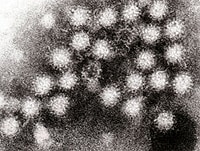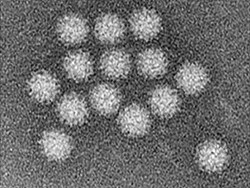An Audit Report on Grant Management at the Cancer Prevention and Research Institute of Texas and Selected Grantees
January 2013
Report Number 13-018Overall Conclusion
The Cancer Prevention and Research
Institute of Texas (CPRIT) should significantly improve the transparency
and accountability of its grant management processes. Weaknesses in
CPRIT's processes reduce its ability to properly award and effectively
monitor its grants. Specifically, CPRIT should address deficiencies in
the following areas:
- Making award decisions.
- Evaluating grant applications.
- Verifying compliance with matching funds requirements.
- Processing payments to grantees.
- Monitoring grantees' expenditures.
- Assessing and measuring research progress.
- Managing contract agreements with grantees.
Making Award Decisions
CPRIT
should ensure that all award decisions are free from real or apparent
conflicts of interest. The executive director discussed award
recommendations with certain members of the oversight committee prior to
presenting the recommendations to the full oversight committee. Also,
CPRIT’s chief scientific officer, chief commercialization officer, and
director of scientific review had office locations on the campuses of
higher education institutions that received CPRIT awards. The chief
scientific officer, the chief commercialization officer, and the
director of scientific review are responsible for managing the peer
review process for grant applications in their respective areas. In
addition, auditors identified two members of CPRIT's commercialization
review council with financial and personal interests in certain
grantees. Specifically:
- One member of
the commercialization review council was also a member of the board of
directors for a grantee that received a $25.2 million research award
from CPRIT. According to CPRIT's records, that individual did not
participate in the review of the grant application for that grantee.
-
Another member of the commercialization review council provided
consulting services to two applicants applying for Texas life sciences
incubator commercialization grants. That individual was not listed as
participating in the review of grant applications for incubator grants,
and neither applicant ultimately submitted a formal application for an
incubator grant.
CPRIT also reported
that it does not receive financial information about donors to the CPRIT
Foundation or the amounts of the donations. Without that information,
CPRIT has no assurances that it is not awarding grants to the CPRIT
Foundation donors, which could create a conflict of interest. The
General Appropriations Acts (81st and 82nd Legislatures) state that an
individual; an organization; or an employee, officer, or director of an
organization that makes a contribution to the CPRIT Foundation, or a
person who has second-degree consanguinity or affinity to an employee of
CPRIT, is not eligible to receive grants from CPRIT.
CPRIT's
lack of controls for ensuring there are not any business and
professional relationships between its peer reviewers and grantees
impairs CPRIT's ability to assure the public that its award decisions
are not improperly influenced.
Evaluating Grant Applications
CPRIT
should ensure that its policies and procedures for evaluating grant
applications are up to date and consistently followed. In addition,
CPRIT should maintain records of all reviews that are performed.
Auditors
could not verify that CPRIT consistently followed its process for
withdrawing grant applications from the peer review process. CPRIT did
not have reliable data to support grant applications that were withdrawn
(see Chapter 1-B for more information).
Auditors identified the following significant issues for three grant applications tested:
-
The Statewide Clinical Trials Network of Texas (CTNeT) received a $25.2
million research grant from CPRIT even though CTNeT did not exist at
the time the grant was awarded. The CTNeT grant was the largest single
grant that CPRIT had awarded as of June 2012. CPRIT originally awarded
the grant to the University of Texas M.D. Anderson Cancer Center in June
2010. Subsequent to the award, CTNeT was formed and registered to
become a Texas-based non-profit company in August 2010 and CPRIT
executed a grant agreement with CTNeT in September 2010. It is unclear
what allowed CPRIT to transfer the award from the University of Texas
M.D. Anderson Cancer Center to CTNeT. CPRIT also did not have
documentation to support that the scientific review council recommended
the original application for a grant.
-
CPRIT awarded a $20.0 million commercialization grant to the
Houston-Area Translational Research Consortium (HATRC) and the Institute
for Applied Cancer Science (IACS). Neither the HATRC grant application
nor the IACS research proposal received scientific, due diligence, or
intellectual property reviews. CPRIT reported that it rescinded the
award in May 2012 after IACS requested to resubmit its research proposal
for commercialization and scientific reviews.
-
CPRIT awarded an $11.0 million commercialization grant to Peloton
Therapeutics Inc. (Peloton, formerly Damascus Pharmaceuticals), whose
application did not receive scientific, commercialization, due
diligence, or intellectual property reviews.
Auditors
reviewed the peer review scores for 218 (5.9 percent) of the 3,698
grant applications CPRIT reported receiving from September 2009 through
June 2012 through the CPRIT Application Receipt System. Auditors
identified four applications for which the peer review scores were not
consistent with receiving a grant recommendation. CPRIT also did not
have documentation to support the factors that peer reviewers used in
making grant recommendations to CPRIT's executive director.
In
addition, CPRIT did not document its review of recruitment grant
applications or maintain records of those reviews in its Peer Review
Management Information System. Recruitment grants are for the
recruitment of investigators with the ability to make outstanding
contributions to the field of cancer research, promote inquiry into new
areas, foster collaboration, and stimulate growth in the field. Select
scientific review council members manually review the recruitment grant
applications; however, the only documentation maintained was a one-page
summary statement that recommends the award of a recruitment grant. As
of August 2012, CPRIT had awarded 60 recruitment grants totaling $184.9
million.
By not ensuring that all
grant applications are properly evaluated and documented, CPRIT weakens
its ability to ensure that its award decisions best align with the
agency's mission.
Verifying Compliance with Matching Funds Requirements
CPRIT
should verify the accuracy and availability of the matching funds its
grantees report. The Texas Constitution, Article III, Section 67
(a)(3)(i), requires that before CPRIT awards a grant, the grantee must
have funds equal to one-half the amount of the grant dedicated to the
research that is the subject of the grant. CPRIT requires grantees to
certify the amount of matching funds available for research at (1) the
time of contract execution and (2) on an annual basis thereafter.
However, CPRIT did not verify the accuracy and availability of the
matching funds reported. In addition, during site visits to five
grantees, auditors identified two methodologies, permitted by CPRIT,
that allow a grantee to report funds that were not used on a
CPRIT-funded research project as matching funds. Specifically:
-
During interviews with auditors, staff at the University of Texas M.D.
Anderson Cancer Center, the University of Texas Southwestern Medical
Center, and the Baylor College of Medicine reported that the matching
funds those institutions reported to CPRIT were based on the total
amount of funding available to them for cancer research, excluding CPRIT
funding. However, those reported matching funds were not dedicated to
CPRIT-funded research projects. As of August 2012, those three
institutions had received a combined 331 awards totaling $402.4 million.
- CTNeT, which received a $25.2
million research grant, did not dedicate $12.6 million in matching funds
as required. Instead, CPRIT accepted certifications that the
University of Texas M.D. Anderson Cancer Center and the Baylor College
of Medicine would fulfill CTNeT's matching funds requirements for the
first and second year of the grant agreement term, respectively.
However, CTNeT did not receive those reported matching funds. For the
first year of the CTNeT grant, CTNeT reported that the CPRIT grant
accounted for 98.0 percent of its total revenue.
Processing Payments to Grantees
CPRIT
should establish requirements to help ensure the appropriateness of
advance payments and reimbursements it makes to grantees. Specifically:
- Advance payments.
CPRIT's policies and procedures specify that CPRIT will distribute
funds on a reimbursement basis. However, it made advance payments that
totaled $40.2 million to 10 grantees from September 2008 through August
2012.
- Reimbursements.
CPRIT relies on quarterly financial status reports and supporting
documentation that grantees submit for reimbursement payments. However,
CPRIT did not always obtain sufficient documentation from grantees to
support the appropriateness of the reported expenditures. For 85 (84.1
percent) of the 101 reimbursements tested, or $9.4 million in
reimbursements, CPRIT did not obtain documentation such as time sheets,
invoices, contracts, and bill records to support the reimbursed
expenditures. For those 85 reimbursements, grantees typically provided
CPRIT with spreadsheets that summarized the expenditures.
Monitoring Grantees' Expenditures
CPRIT
should improve its processes for monitoring grantee expenditures.
CPRIT requires grantees to submit quarterly financial reports on
research expenditures associated with awarded grants. In addition,
CPRIT established a desk review process to assess grantees’ financial
controls and reported expenditures. However, CPRIT did not ensure that
all grantees submitted financial reports in a timely manner, did not
maintain a complete record of all the financial reports it received from
grantees, and had not performed any desk reviews of 487 grants totaling
approximately $683 million as of June 2012.
Assessing and Measuring Research Progress and Compliance with Grant Milestones
CPRIT
should ensure that grantees submit all required annual progress reports
by required due dates, and it should review those reports and document
those reviews. While CPRIT developed monitoring tools for tracking the
due dates and submissions of annual progress reports, CPRIT lacked
documentation to support that it followed up with grantees for past due
reports. For a sample of 20 grant agreements that auditors reviewed,
CPRIT had not received 12 (60 percent) of 20 annual progress reports
that were due from September 2011 through June 2012. CPRIT's records
indicated that it had started following up with grantees about past due
reports beginning in May 2012. In addition, CPRIT has not developed
review criteria for evaluating and measuring a grantee's reported
progress. Although CPRIT used its peer reviewers to evaluate the eight
annual progress reports it received, the peer reviewers did not document
whether a grantee's reported progress met grant milestones or whether
any problems had been identified that could affect the grantee's ability
to complete the research project. CPRIT reported that it received
emails from the peer reviewers indicating that a review was complete and
that no issues had been reported by reviewers.
CPRIT should improve its management of the CTNeT research grant and other administrative practices.
Auditors
identified significant weaknesses in CPRIT's award decision and
management of the $25.2 million research grant to CTNeT (see Chapter 3
for more information about this grant). Specifically:
-
CTNeT's grant application did not receive a favorable peer review
score. CPRIT evaluated grant applications on a scale of 1 to 9, with 1
being the highest. The CTNeT grant application received a peer review
score of 4.64. Auditors reviewed the peer review scores for 44 other
applications and identified 9 applications that were not awarded grants
that received peer review scores ranging from 3.93 to 4.40.
-
CPRIT has a role in CTNeT's business operations. CPRIT’s oversight
committee chair, vice-chair, and executive director interviewed and
hired CTNeT's chief operating officer before the contract was executed.
In addition, CPRIT's executive director, chief scientific officer, and a
member of CPRIT's commercialization review council are members of
CTNeT's board of directors.
- CPRIT made
$6.8 million in advance payments to CTNeT even though its grant
agreement with CTNeT allowed only reimbursement payments.
- CTNeT did not comply with matching funds requirements and annual progress reporting requirements.
CPRIT’s
relationship with CTNeT and its lack of enforcing contract requirements
impair CPRIT's ability to ensure that CTNeT is properly using grant
funds and complying with grant requirements.
CPRIT also should improve certain procurement and payment practices for vendors and other professional services.
CPRIT
should strengthen its vendor procurement and payment practices to
ensure that the services and costs for grant management services and
virtual management company services are reasonable and necessary.
Specifically:
- The costs for a
five-year contract for grant management services increased from $15.7
million to $21.2 million (35.2 percent) within the first three years of
the contract. The cost increases were based on amendments to the
contract that increased the workload of the grant management services
contractor and the development of a grant management system.
-
The costs for the first two years of a four-year contract for virtual
management company services increased from $1.5 million to $4 million,
approximately 166.7 percent. The cost increases were based on
amendments to include services management, an entrepreneur-in-residence
program, salaries for additional executive positions that were added to
the contractor's staff, and other direct costs.
CPRIT
also did not consistently obtain sufficient documentation to support
the appropriateness of honorarium payments it made to its peer
reviewers. From September 2009 through June 2012, honorarium payments
to peer reviewers were approximately $6.7 million. In addition, CPRIT
lacked documentation to justify increases in honorarium payments to
officers of its peer review committees. Also, auditors identified
honorarium payment amounts for certain peer reviewers that may be
significantly higher than the payment amounts that the National Cancer
Institute pays its peer reviewers.
Auditors
communicated other, less significant issues to CPRIT's management
separately in writing. Those issues were related to administrative
reporting discrepancies, the forms grantees use for reporting, reporting
practices for certain grantees' payment practices, performance feedback
to grantees, executing grant agreements, and management of peer
reviewer rosters.
The Legislature should consider amending statutory requirements to improve the transparency and accountability of CPRIT.
The Legislature should consider statutory requirements to:
-
Allow peer reviewers to provide their grant recommendations to the
executive director and members of the CPRIT oversight committee at the
same time.
- Clarify what funds can be used and the intended use of matching funds reported by grantees.
- Clarify whether contributions made by non-profit foundations affiliated with grantees are appropriate.
- Prohibit an interlocking directorate between CPRIT and the CPRIT Foundation.
- Prohibit CPRIT employees from serving on a grantee's board of directors and related foundations.
-
Clarify the positions of the oversight committee's presiding officer
and other officers, including the responsibilities and specific term of
service for those positions.
- Allow members of the oversight committee to affirmatively vote to approve the executive director's recommendations.
-
Remove the Attorney General and the Comptroller of Public Accounts from
CPRIT's oversight committee so that their statutory duties and
responsibilities would not be impaired.
-
Allow the executive director to provide CPRIT's oversight committee,
along with grant recommendations, documentation of the other factors
that the executive director considered when making grant
recommendations.
- Require the CPRIT Foundation to make its records, books, and reports available to the public.







